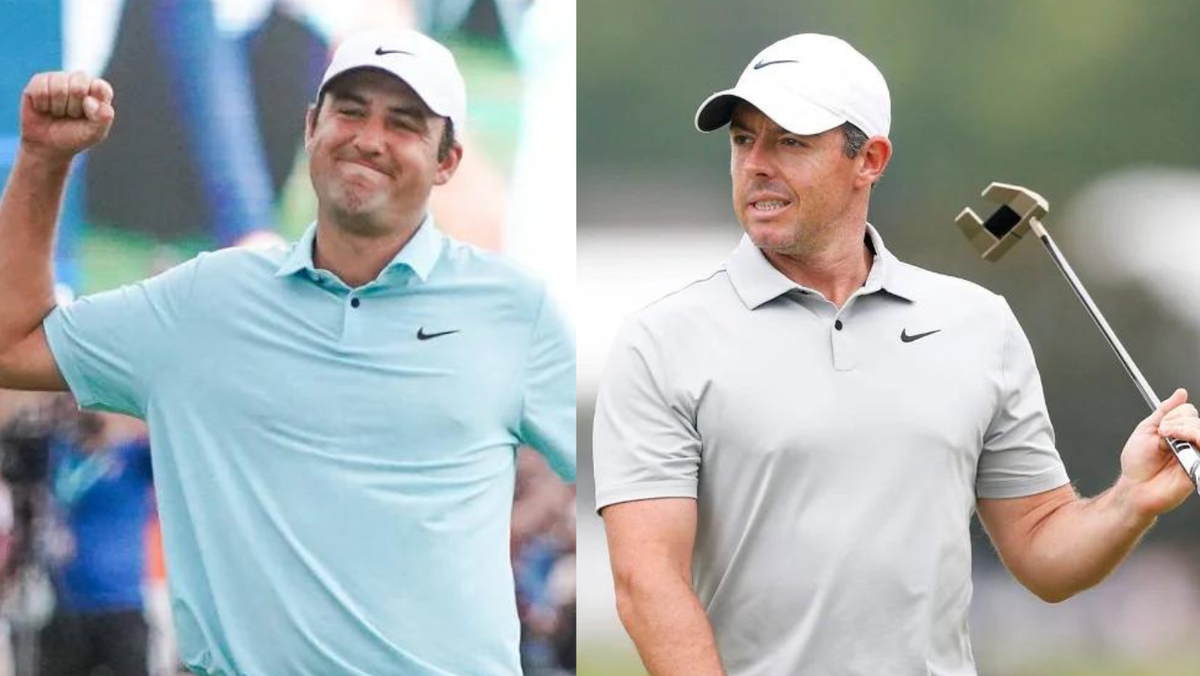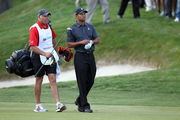
Imago
Image Courtesy: IMAGO

Imago
Image Courtesy: IMAGO
Just a few days until the Ryder Cup begins. Featuring the best of the US and Europe, the Ryder Cup promises thrills with every shot. In comparison with the usual 72-hole stroke-play format, this event boasts an adrenaline-inducing match-play format. One of the formats played here is the Foursomes.
Watch What’s Trending Now!
Thriving under team chemistry, foursome matches require two players to make a team. As they tee it up head-to-head against another pair from the opponent team, the golfers take turns hitting the balls. They keep hitting the ball until it rolls off the green into the hole. The pair also alternates between the holes, taking turns going first at each hole. Essentially, breaking it down, player 1 hits the first swing in hole 1. His pair takes on the new swing, going back and forth until it finishes. For the next hole, player 2 hits the first swing, repeating the process.
You might be wondering how this works in a match-up context. Well, both teams send out four pairings (eight players) into the field, leaving 4 sitting down during the sessions. The teams go through all the holes, and the winner on each hole is decided based on the least number of strikes. The pairing that wins the most holes wins the foursome, too. The opponent team isn’t made aware of the pairings until the moment of the matches. But the biggest question is: How do these wins translate to the team’s benefit?
ADVERTISEMENT
Unlike the PGA Tour events, the Ryder Cup decides the winner based on the total points accumulated, instead of the number of strokes. Each win, whether in an alternate paired shot like the foursomes or a singles match, contributes one point to the winning team. The event spans across 16 paired matches and 12 single matches, totaling 28 points for the event. The team to reach 14 ½ points first clinches the trophy. However, in rare events when both teams tie with a score of 14, the defending team retains its title. But how much do these foursomes actually impact the result?

Reuters
Golf – The 2023 Ryder Cup – Marco Simone Golf & Country Club, Rome, Italy – September 29, 2023 Team USA fans react as Team USA’s Patrick Cantlay and Xander Schauffele walk up the 1st hole during the Foursomes REUTERS/Phil Noble
The foursomes can mean the difference between parading national pride and leaving empty-handed. With 8 foursome sessions, these wins can potentially contribute more than half of the required 14 ½ points. These sessions take place alongside the fourball sessions on Friday and Saturday, leading to the singles matches on Sunday. The day begins with the foursomes in the morning session, while the fourballs roll over in the afternoon. However, these matches require more meticulous strategy than the singles played by all the team members.
ADVERTISEMENT
Rather, the foursomes require the captains to make difficult choices. Not only do they decide which player gets to tee it up in these sessions, but they also have to decide who to sit out. The real challenge is to make the actual pairings. Captains must be cautious with pairings, considering players’ compatibility, complementary playing styles, temperament under pressure, and past performance together. A mismatch in personalities or strategies can disrupt rhythm, while a well-matched duo can maximize strengths and cover weaknesses.
The Ryder Cup has witnessed multiple successful pairings and iconic duos.
ADVERTISEMENT
Top Stories
Tiger Woods’ Treatment of Caddies Set Him Apart from PGA Tour Rivals, Confesses Steve Williams

Rickie Fowler Comes Clean on Health Issue Stopping Him from Playing PGA Tour Events

LIV Golf Signs a Deal With PGA Tour’s 20-Year-Long Partner in Another Shocking Move

Is There a Cut at Abu Dhabi HSBC Championship 2025? Format of DP World Tour Event Explained

DP World Tour to Stand Apart from PGA Tour’s Harsh Stance on Pros’ Involvement in LIV Golf Event – Report

The foursome pairings that turned heads
Often regarded as the most successful Ryder Cup pairing, it isn’t justice without mentioning the legendary duo Seve Ballesteros & José María Olazábal. Together earning 12 points over 15 matches, their foursomes record is 6-2-1. Rooted in a shared passion for the competition and respect for the Ryder Cup, the European duo earned the nickname ‘The Spanish Armada.’ Rightly so, their pairing is a picture-perfect example of an excellent pairing by the captain. Ballesteros’ fiery spirit and Olazábal’s calm demeanor created a balanced dynamic, making them formidable opponents. Blending their styles, their foursome matches have always been worth watching.
Team US has had multiple successful pairings. However, Phil Mickelson and Keegan Bradley stand out, reflecting what a dynamic duo looks like. The pairing contributed essential points to Team USA, with a 4-1-0 Ryder Cup record together. This victory came from both the foursomes and the fourball sessions, showcasing their ability to quickly adapt to different formats and to each other’s styles. Their partnership was instrumental in Team USA’s efforts during the 2012 and 2014 Ryder Cups.
ADVERTISEMENT
However, more recently, the duo that made Ryder Cup history was the European ‘Moliwood’ pairing. Winning all four of their matches in the 2018 Ryder Cup, Tommy Fleetwood and Francesco Molinari became the first to do so. Their formidable record was a testament to their flawless teamwork. Despite Molinari’s previous winless record in the Ryder Cup, the pairing proved to be a game-changer. Their victories included decisive wins over American stalwarts like Tiger Woods and Patrick Reed, showcasing their dominance and cohesion on the course.
The foursomes have always been a crucial part of the Ryder Cup battles. Would pairings this year be exciting, too?
ADVERTISEMENT
ADVERTISEMENT
ADVERTISEMENT

